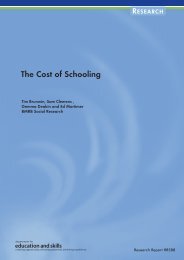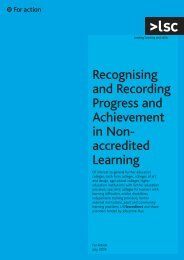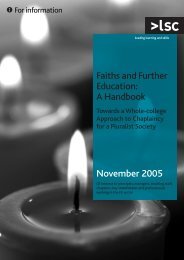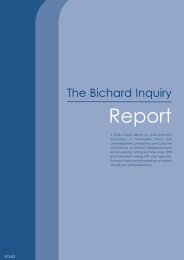Full Text (PDF) - Official Documents
Full Text (PDF) - Official Documents
Full Text (PDF) - Official Documents
Create successful ePaper yourself
Turn your PDF publications into a flip-book with our unique Google optimized e-Paper software.
Managing the expansion of the Academies Programme Part One 17<br />
1.18 As at September 2012, the highest proportion of primary schools that were<br />
academies in any local authority was 55 per cent, with most areas 10 per cent or less.<br />
The Department will need to continue developing its approach to generating demand if it<br />
is to achieve its aim of a school system consisting mainly of academies.<br />
Coping with demand<br />
1.19 The expansion put the Department under considerable resource and time<br />
pressure, particularly in the first 18 months. It needed to recruit and train additional staff<br />
to assess and process conversion applications, a challenge exacerbated by a freeze<br />
on civil service recruitment in 2010-11. It managed the resultant pressures through<br />
a combination of temporary staff and transfers from within the Department and its<br />
arm’s‐length bodies. Since the expansion began, the Department has increased the<br />
number of staff working on academies by 133 per cent, from 120 in 2010-11 to 280<br />
in 2011-12.<br />
1.20 Despite the challenges, more than 70 per cent of converters responding to our<br />
survey rated the Department as ‘quite good’ or ‘very good’ in its handling of various<br />
aspects of their conversion, including providing information and guidance, being easily<br />
contactable and resolving queries quickly.<br />
1.21 A few schools have faced particular challenges around conversion, which have<br />
increased conversion times and costs. For example, some conversions were initially<br />
delayed owing to uncertainty among Private Finance Initiative (PFI) contractors as to<br />
whether local authorities could legally continue to pay them in respect of academies’<br />
PFI contracts. Forty of the converters open as at September 2012 had PFI construction<br />
contracts. The average conversion time for these academies was 10.5 months (ranging<br />
from 3.1 to 17.5 months) compared to 5.3 months for all converters.<br />
1.22 The Department has since clarified through a QC’s opinion and the Education<br />
Act 2011 that local authorities can continue to make PFI payments for academies.<br />
It also pays converters with PFI contracts a grant of up to £12,000 towards resolving<br />
associated legal issues.<br />
1.23 The YPLA and EFA have also faced resourcing challenges to keep pace with the<br />
expansion, particularly given their twin roles of administering funding and monitoring<br />
academies’ finance and governance (see Part Three). In September 2010, the YPLA<br />
was resourced to support 300 academies. By April 2011, it had doubled its academies<br />
staff to 160 through internal transfers, and by September 2011 this had risen to 260.<br />
Our survey suggests that, despite this extra capacity, the YPLA and its successor have<br />
been unable to provide academies with consistently good service, leading to delays in<br />
agreeing and issuing funding (Figure 4 overleaf). The EFA is seeking to address these<br />
issues by making more information available online, and by more efficient IT systems and<br />
processes for internal communications, enquiry handling and information sharing.

















